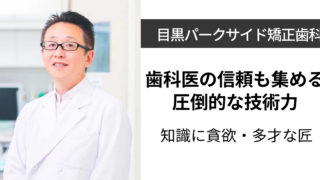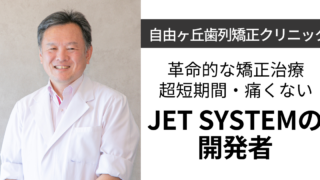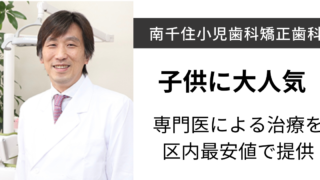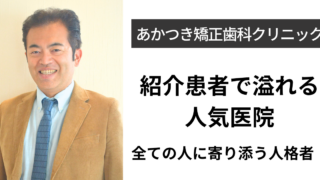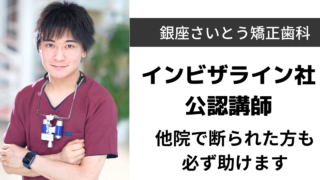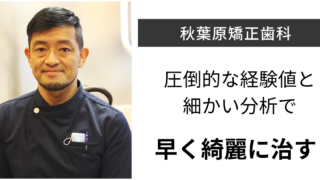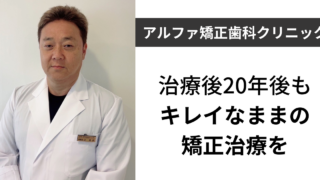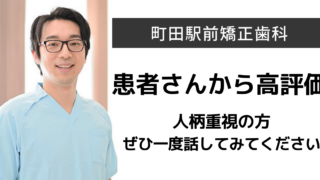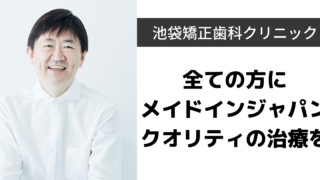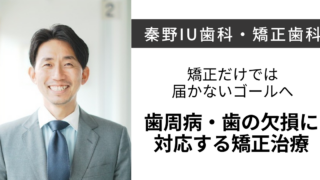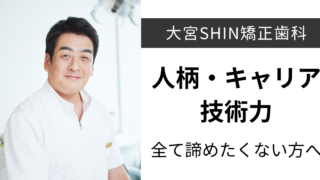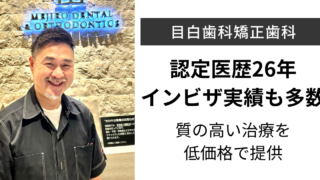
矯正には抜歯が必要?抜歯・非抜歯矯正の基準について歯科医師が解説します!
!

この記事では以下の内容がわかります。
・矯正でどんなときに抜歯が必要か
・抜歯が必要でも抜かないで治療するとどうなるか
・抜歯の痛み
・抜歯をする場所
・抜歯・非抜歯の基準
「抜歯が必要ですよ」
矯正をする際に歯科医師から上のような言葉をかけられる場面は多いです。
矯正治療では抜歯が必要なケースがあります。
矯正における抜歯治療は矯正を成功させるための処置のひとつですが、
「本当に歯を抜く必要があるの?」
と疑問をお持ちの方もいらっしゃるのではないでしょうか?
今回は「矯正に抜歯が必要な理由」「抜歯・非抜歯矯正の基準」についてご説明します。
矯正治療には本当に抜歯が必要なの?

◎歯列矯正では抜歯が必要になるケースがあります
「大切な歯、できることなら抜きたくない」
矯正治療を受ける際に歯を抜きたくない、という方は多いです。
では、そもそも矯正治療には本当に抜歯が必要なのでしょうか?
答えは、「すべてではないが、抜歯が必要になるケースがある」です。
矯正治療で抜歯をする主な理由は
歯が並ぶスペースを確保するため
です。
矯正をする際、歯の大きさに対してあごの大きさが足りないと、歯を並べるためのスペースが足りなくなってしまいます。
スペースが不足しているのに無理に矯正すると歯がガタガタにならんだり、前歯が突き出てしまうのです。
このため、歯列矯正では抜歯が必要になることがあります。
どんなケースで抜歯が必要?
矯正治療で抜歯が必要になる場合、主なケースとして以下の2つが挙げられます。
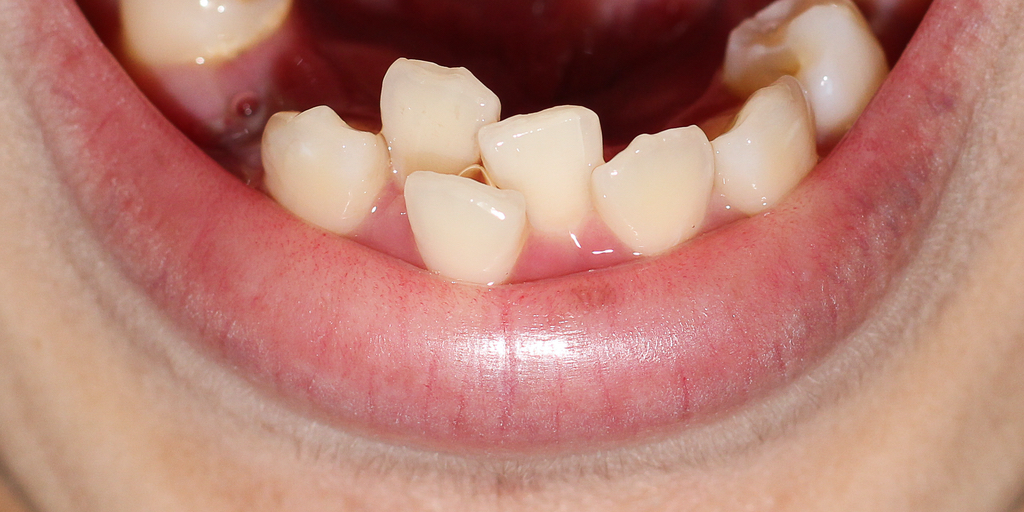
①歯の大きさに対してあごが小さい場合
現代はやわらかい食感の食べ物やレトルト食品、食の西洋化などが原因であごが小さい人が増えてきています。
すなわち、このような食生活によってしっかりと噛まなくなり、顎の骨の成長が阻害されます。
あごが小さいと歯がちゃんと並ぶためのスペースが足りなくなり、不正咬合をひきおこす原因になります。
矯正を行う際に歯の大きさに対してあごが小さいときには、抜歯をすることで歯が綺麗に並ぶためのスペースを確保します。
もし、あごが小さいのに抜歯をせずに矯正をしてしまうと、以下のトラブルが発生しやすくなります。
・歯並びがデコボコになる
・前歯が前に突き出してしまう
・歯ぐきが下がる
・かみ合わせがおかしくなる
②上あごと下あごのずれが大きい場合
上あごと下あごの位置が大きくずれていると、かみ合わせやそしゃく機能、歯並びに大きな影響がでてきます。
あごの位置を調整する治療には外科手術がありますが、なるべくなら手術をしたくない方も多いのではないでしょうか。
このような場合は抜歯によって歯を動かすスペースを作り、歯を奥に移動させる歯列矯正で歯並びをととのえていきます。
抜歯が必要なケースでもし歯を抜かなかったらどうなるの?
「歯を抜いたら後悔しそう・・・」
「抜歯しないで矯正してもらえますか」
抜歯が必要なケースでも、このように「歯を抜かないで」と希望する患者さんはいます。
では、抜歯が必要なケースで歯を抜かずに矯正を行ったらどうなるのでしょうか?
抜歯が必要なのに抜歯をせずに矯正した場合のデメリットには以下のようなものがあります。
①前歯が前に突き出てくる(口ゴボ、ゴリラ顔になる)
抜歯が必要なのに歯を抜かずに矯正してしまうと歯が並ぶスペースが足りなくなります。
その結果、前歯が前に突き出てしまい、いわゆる「口ゴボ」「ゴリラ顔」のようになることがあります。
②奥歯のかみ合わせがおかしくなる
抜歯をせずに矯正した場合、前歯だけではなく奥歯にも影響がでやすくなります。
スペースがないのに無理に矯正することで奥歯のかみ合わせがおかしくなったり、奥歯が斜めに倒れてくるなどのトラブルが発生することがあります。
③歯ぐきが下がる
抜歯が必要なケースで歯を抜かずに矯正すると歯ぐきが下がってしまうことがあります。
これは、歯がきちんと並ぶスペースが足りていないのに無理に矯正をすることで本来あるべき骨の位置から歯がずれてしまい、歯槽骨の吸収が進んでしまうためです。
特に日本人は歯槽骨や歯ぐきが欧米人よりも薄いため、非抜歯矯正で歯ぐきが下がるトラブルが発生しやすいです。
④治療のやり直しで余計な時間がかかってしまう
出っ歯(上顎前突)や受け口(下顎前突)で抜歯が必要なのに歯を抜かずに矯正を行った場合、矯正の効果があまり見られずに治療が終わってしまうことがあります。
このようなケースでは抜歯をした上で治療のやり直しが必要になります。
場合によってはやり直しに数年以上の期間が必要になることもあり、余計な時間がかかってしまいます。
抜歯は痛い?どこで歯を抜けばイイの?

◎想像するよりも抜歯は痛くありません
矯正で抜歯をするケースでは、抜歯時の痛みを心配する患者さんは少なくありません。
たしかに「歯を抜くのは痛い」というイメージは多くの方が持っているかと思います。
抜歯の際は通常のむし歯治療でする麻酔よりも多めに麻酔注射を行います。
このため、みなさんが想像しているよりも痛みは感じません。
麻酔が効いているので
「あれ?いつ抜いたの?」
と拍子抜けしてしまう患者さんもいるほどです。
あまり心配しなくても大丈夫ですよ。
抜歯後に痛みが腫れが出ることもありますが、その場合は痛み止めの薬や抗生物質で対応します。
◎抜歯は矯正専門歯科とは別の一般歯科で行います
矯正の際に抜歯をする場合にどこで歯を抜くかですが、ほとんどのケースでは矯正治療をするクリニックとは別の一般の歯科医院で抜歯を行います。
まれに抜歯も行う矯正歯科もありますが、少数派です。
抜歯を行う歯科医院は患者さんがご自身で探すか、もしくは、矯正歯科が歯科医院を紹介してくれることもあります。
矯正治療に必要な抜歯については基本的に自費診療となりますので、健康保険の適応外となります。
料金の相場ですが、数千円から高くても5万円以下で実施している医院がほとんどです。
抜歯と非抜歯の基準は?
抜歯をするか非抜歯で矯正するかの基準は以下の3つが主なものとして挙げられます。
①歯のデコボコ(ガタガタ)の大きさ
歯のデコボコ(叢生、乱杭歯)が大きい場合は歯を動かす距離が増えるため、抜歯が必要になります。歯のデコボコが小さければ非抜歯で矯正することも可能です。
②前歯の傾きの大きさ
前歯が前方に大きく傾いている場合、矯正では歯を奥に移動させる距離が増えるため抜歯が必要になります。
前歯の傾き度合いが小さい場合は非抜歯矯正で治療可能なケースもあります。
③口元の突き出し方の大きさ
口元が大きく前に突き出ているようなケースでは歯を後ろに移動させる距離も長くなります。
このため、抜歯が必要になることが多いです。
特に口ゴボやゴリラ顔などの症状がある方はほとんどのケースで抜歯が必要になります。
【まとめ】
矯正治療における抜歯・非抜歯の基準についてご説明をさせていただきました。
・矯正治療では抜歯が必要になるケースがある
・抜歯が必要なのに歯を抜かないと矯正が失敗することも
・基本的に矯正のための抜歯はそれほど痛くない
・抜歯は矯正歯科とは別の歯科医院で行うことが多い
矯正治療では抜歯しなければならないケースはかならず存在します。
「歯を抜いて後悔したくない」
という患者さんは多いのですが、むしろ、
「歯を抜かずに矯正をして失敗し、後悔する」
ことを避けた方が賢明です。
患者さんからの強い希望があり、ある程度の仕上がりで良いから抜歯をせずに矯正する、というのはありだと思いますが、
絶対抜歯をしないポリシーで矯正を勧める歯科医院はあまりおすすめできません。
矯正治療を受ける前には抜歯をするか非抜歯かを含め、疑問点や治療法についてご自身が納得行くまで歯科医師と相談するようにしましょう。
「どの歯科医院を選べば良いのかわからない」という方は現役歯科医師にネットで無料相談可能な365dentistをご利用ください?
 監修 歯科医師/issy
監修 歯科医師/issy
国立歯学部卒業後、東京医科歯科大学歯学部附属病院で研修、現在勤務医として一般歯科、矯正歯科に携わっている。
日本口腔インプラント学会所属

